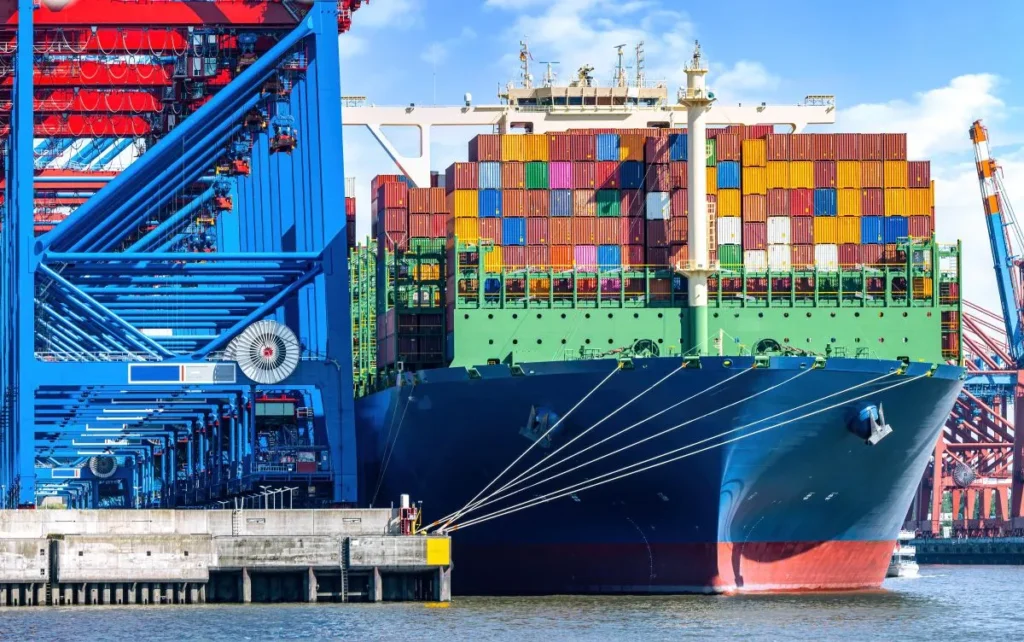The second quarter of 2025 brought further instability to the global freight market, as disruptive trade policy, most notably from the United States, fuelled volatility in both ocean and air cargo. For European road hauliers, the knock-on effects include unpredictable port traffic, unstable airport volumes, and limited visibility on future demand, according to Transport Intelligence.
While global trade flows remain under pressure, new tariffs, shifting capacity strategies, and a fragile economic backdrop are creating highly reactive conditions across supply chains. According to Ti Insight’s Ocean and Air Freight Rate Trackers for Q2 2025, the combination of geopolitical manoeuvring and uncertain demand has led to short-term adjustments in freight volumes and prices rather than long-term stability. European hauliers, positioned at the end of many global import routes, face particular challenges as volatility spills over into inland transport networks.
Ocean freight market stabilises after steep decline, but demand remains weak
According to Ti Insight, the Global Headhaul Index reached 138.1 in May 2025, reflecting a drop of 82.3 points since February and a year-on-year fall of 73.2 points. The decline, which began in late 2024 due to overcapacity and inventory corrections, has slowed in recent months, with only marginal falls in April and May (–1.0 and –0.5 points, respectively). This suggests that the market may have found a temporary floor, though demand remains tepid.
The report describes the ocean freight environment as “reactive,” with carriers responding to persistent overcapacity by limiting availability through blank sailings and service rotations, effectively creating artificial scarcity to hold rates steady. The result is not price equilibrium, but short-term stability driven by tactical interventions.
Trade tensions continue to weigh heavily on the outlook. A potential 50% blanket tariff on all EU imports to the US, set to take effect from 1 June, is already causing concern among shippers. Ti Insight warns this could lead to “blank sailings and booking slowdowns” on transatlantic routes, as businesses brace for retaliatory action from the EU. The uncertainty has further destabilised an already fragile global shipping environment.
Meanwhile, a temporary spike in demand followed a US–China truce, which led to a 275% surge in ocean bookings as shippers rushed to move goods before any reversal. However, this short-term volume increase has not reversed the broader trend of weak demand, particularly in Europe.
Following last year’s inventory corrections, importers now appear to be restocking at a steady but cautious pace. Some of the stabilisation in volumes can also be attributed to a modal shift from air to sea, particularly in Asia-origin lanes, after the air freight market weakened due to policy changes in the US.
Looking ahead, Ti forecasts low volatility for Q3, but notes that any perceived calm could be disrupted by new trade actions or policy reversals, especially in the wake of transatlantic and transpacific trade realignments.
Headhaul air freight rates fall 5.9% month-on-month
While air freight rates remain elevated compared to a year ago, they softened in Q2 2025. According to Ti Insight, headhaul rates dropped 5.9% between April and May, falling from $2.87/kg to $2.70/kg. Backhaul rates also declined, down 4.1% to $2.28/kg. Quarter-on-quarter, both figures showed modest decreases, though headhaul rates were still 44.4% higher than Q2 2024.
The underlying picture is mixed. The removal of the de minimis exemption for low-value imports by the US in early May led to an immediate drop in air freight demand from China. However, a bilateral agreement later in the month produced a 19% week-on-week rebound, stabilising spot rates near $4/kg.
Elsewhere, Asia–Europe routes experienced fluctuations. Exports from China to Europe rose 11% in mid-May, and those from Hong Kong increased 9%. Despite the growth in volume, rates on China–Europe lanes fell 5% to $3.71/kg, while Hong Kong–Europe rates rose 2% to $4.39/kg.
Shifts in capacity allocation are also playing a role. Aircraft delivery delays and the continued reliance on belly hold space in passenger aircraft have limited flexibility. Carriers have redirected capacity toward higher-yielding routes such as Southeast Asia–US, where exporters are rushing to ship goods before a reciprocal tariff expires on 9 July.
The International Air Transport Association (IATA) has forecast a 5.2% decline in global air cargo yields for 2025, citing the effect of protectionist trade policies and shifting sourcing strategies.
For European hauliers, the volatility in air cargo means planning for airport pickups and deliveries remains a moving target. Regional demand is uneven, and short-term volume spikes—particularly in e-commerce and electronics—are likely to create surges in inland haulage requirements, while backhaul flows from Europe to Asia remain soft.









